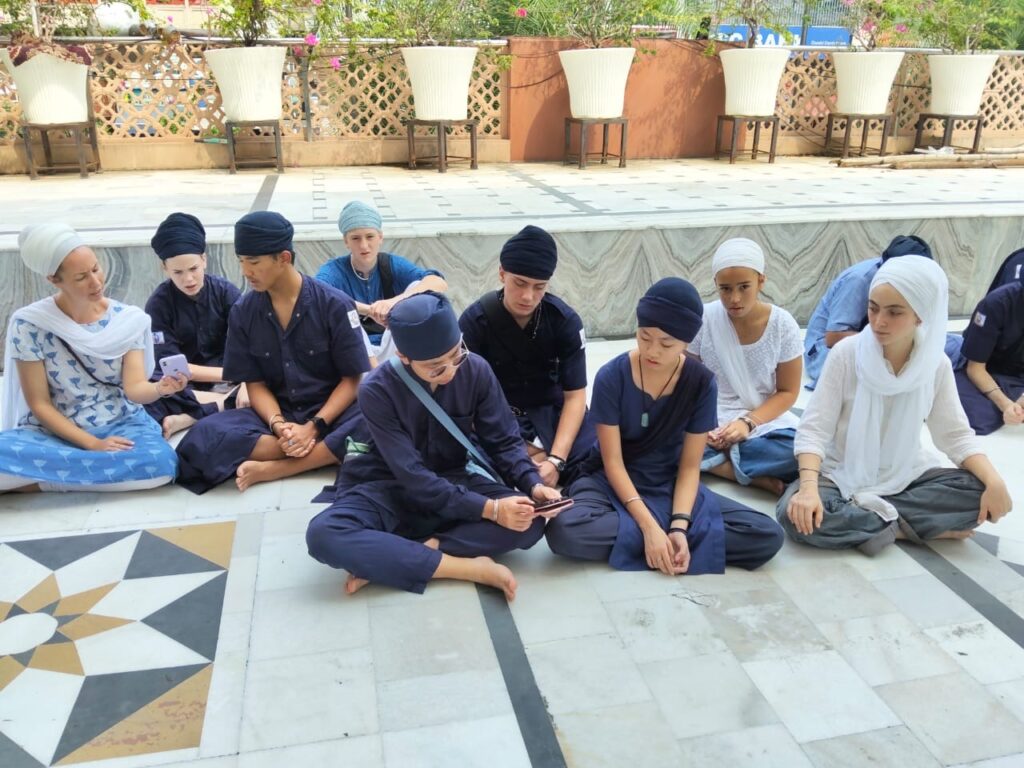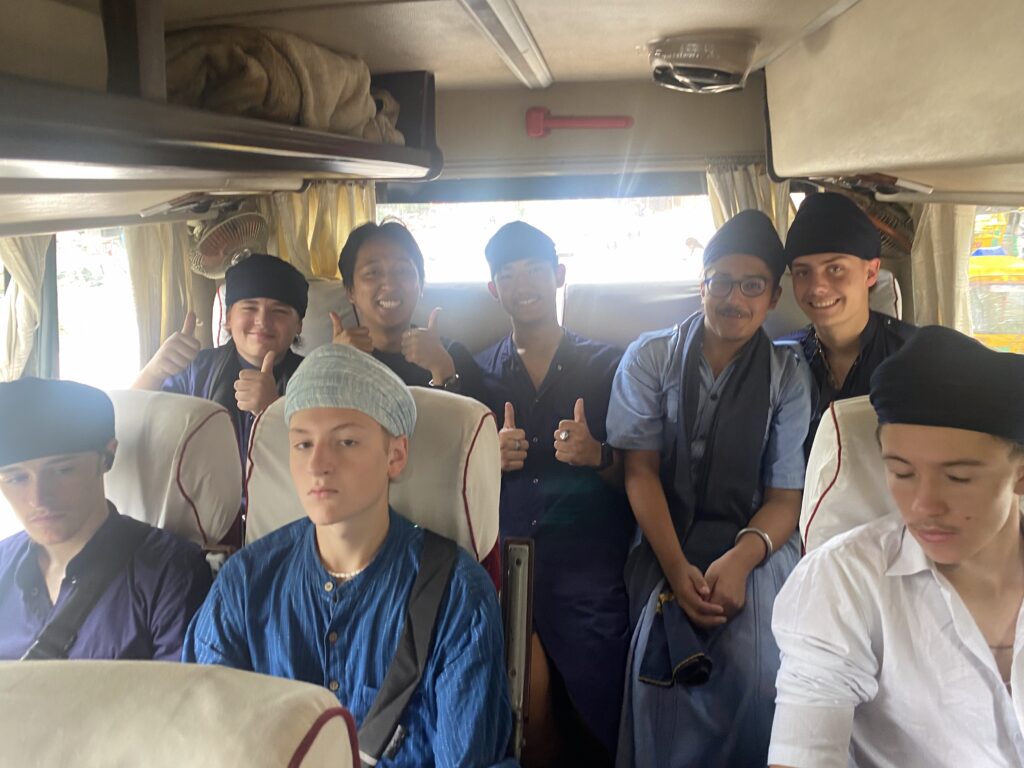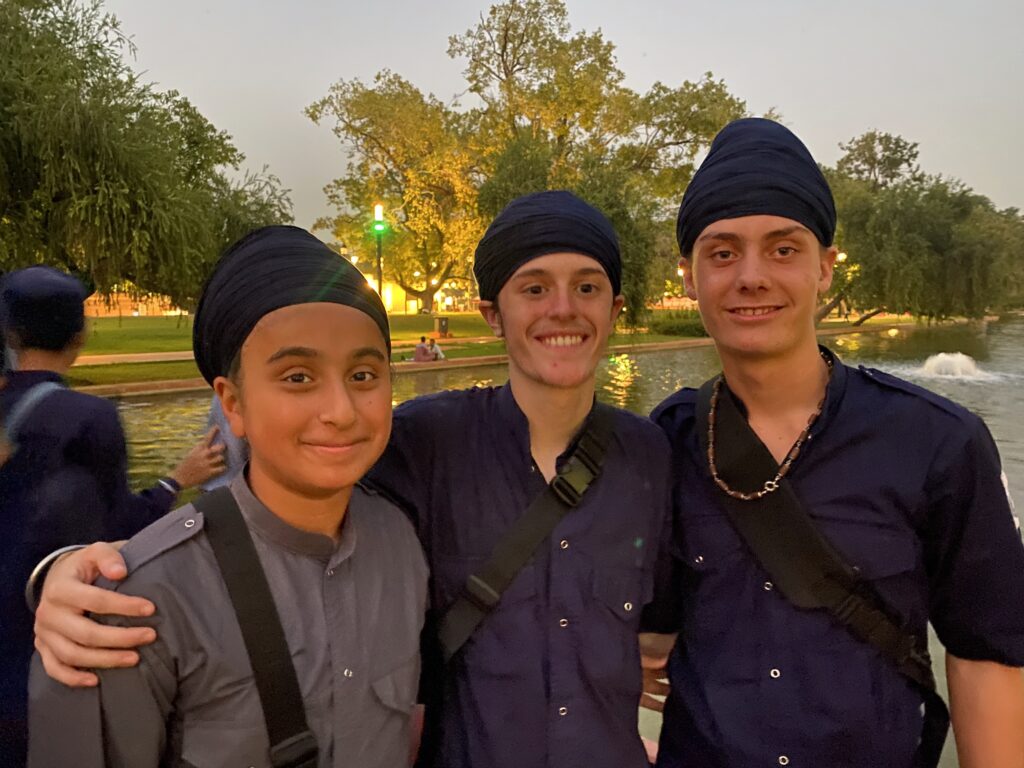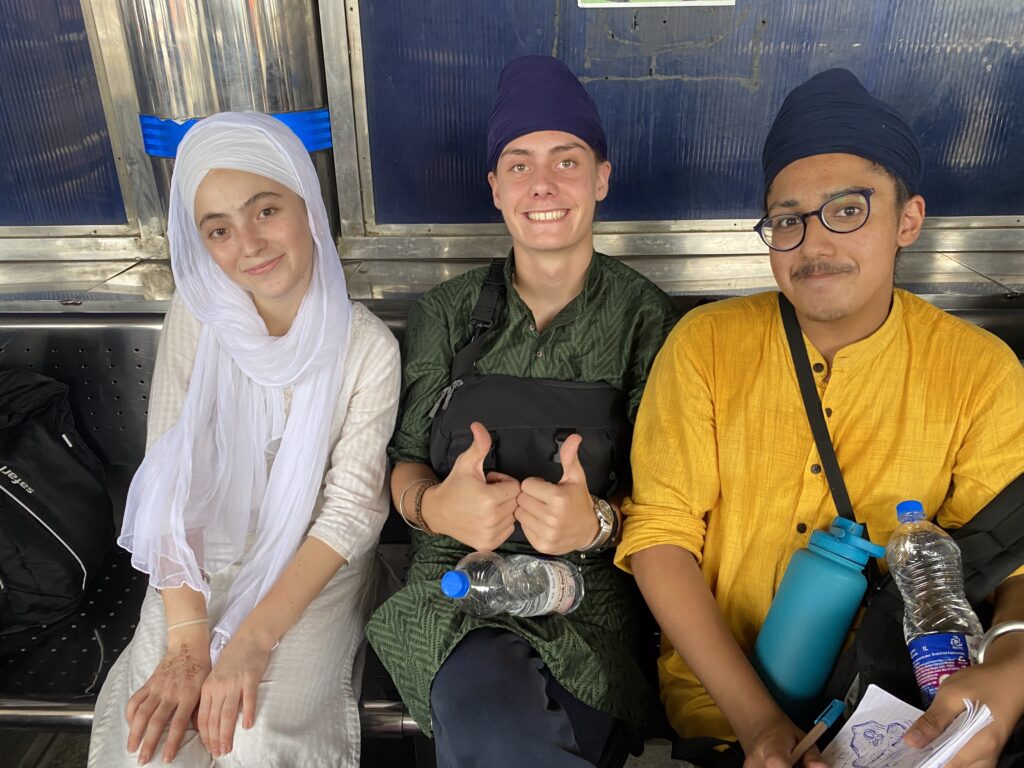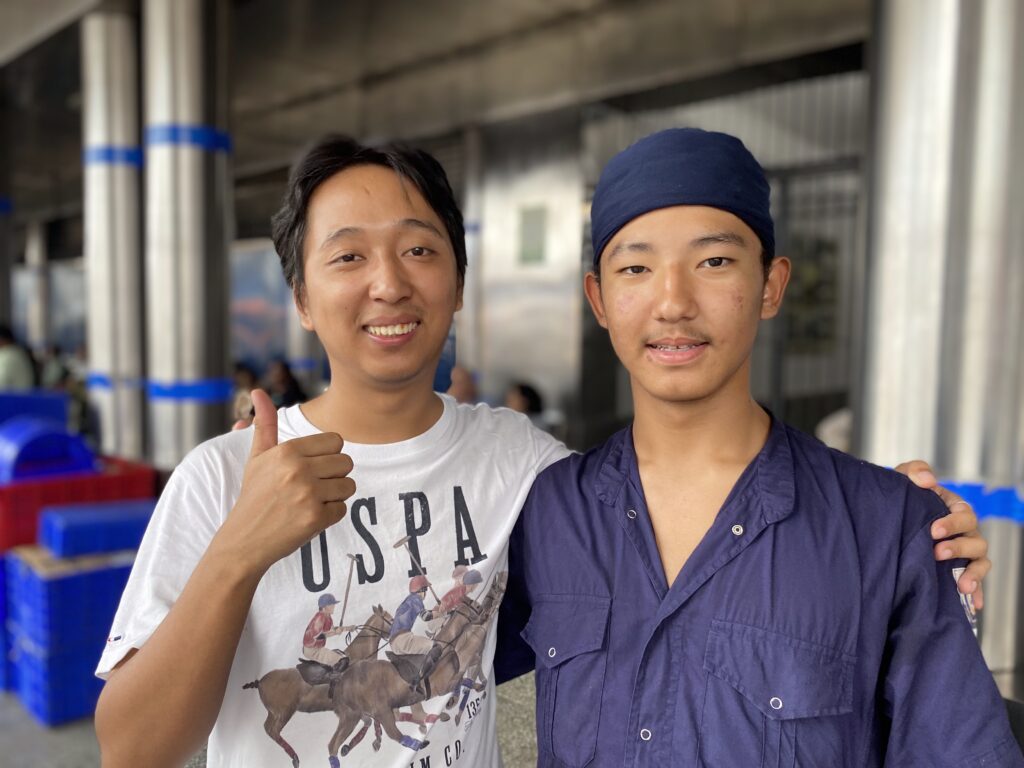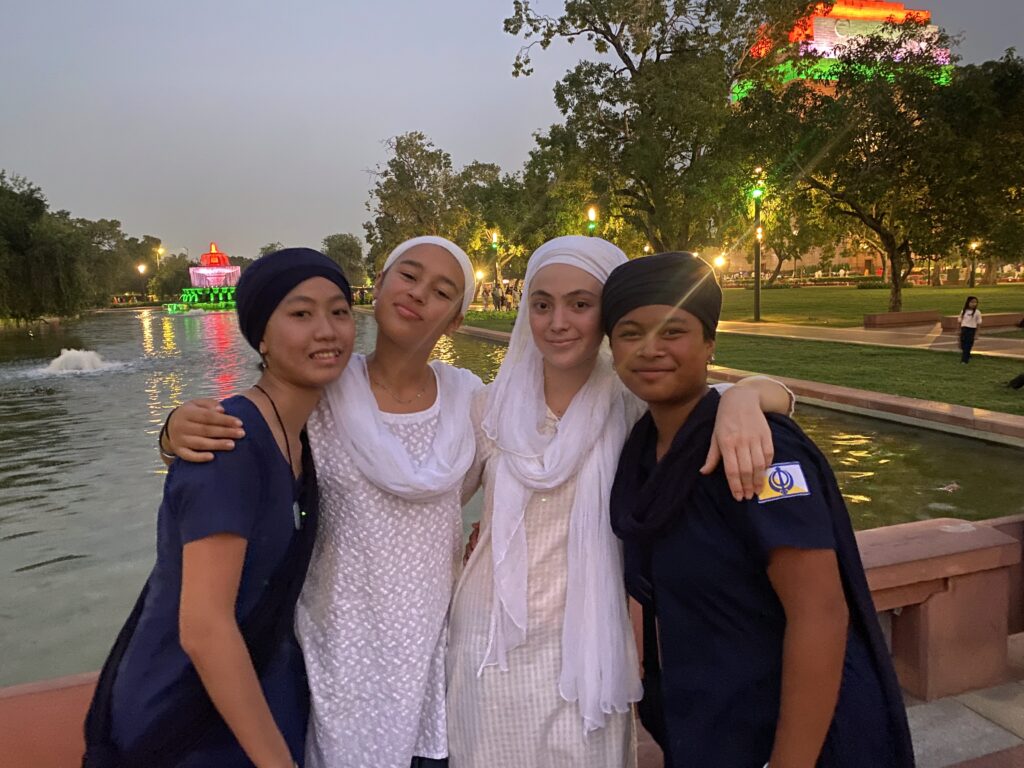This past week, our Miri Piri Academy students had the opportunity to travel to Delhi during Dussehra and Gandhi Jayanti, immersing themselves in India’s rich history, spiritual heritage, and the profound lessons of sacrifice. Though it was a short trip, it was deeply engaging, offering meaningful experiences that connected our students to the teachings and values we explore every day at MPA. From the life of Gandhi to the bravery of Guru Teg Bahadur Ji and the Sikhs who stood by him, every moment was an opportunity to reflect, learn, and grow together as a community.
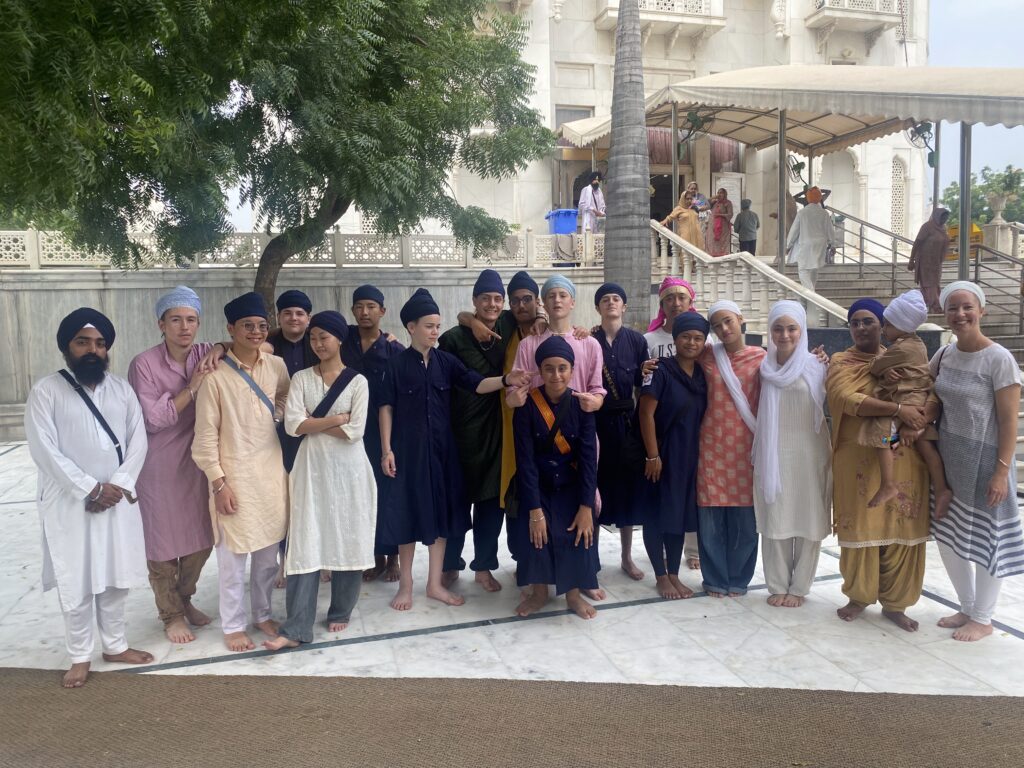
Learning from Gandhi
We began with a focus on Mahatma Gandhi’s life and his immense contribution to India’s independence. Through two focused classes and a visit to the National Gandhi Museum, we explored three key movements he led: Non-Violence, the Salt March, and the Quit India Movement. We also discussed the complexities of Gandhi’s legacy and how he is perceived today, encouraging students to engage critically with history while appreciating the profound principles he stood for.
Honoring Guru Teg Bahadur Ji
Another central focus of our trip was the Sikh Gurdwaras connected to Guru Teg Bahadur Ji, in light of the 350th anniversary of his martyrdom. Visiting Sis Ganj Sahib, where the Guru was martyred, and Rakab Ganj Sahib, where his body was cremated, gave us a tangible connection to history and sacrifice.
Through the stories at these sacred sites, we reflected on the deeper meaning of martyrdom—not merely being killed, but sacrificing oneself for righteousness. We honoured not only the Guru but also the courageous Sikhs who played critical roles that day:
- Daya Singh, Dharam Singh, and Mokham Singh disguised themselves as Mughals to safely collect the Guru’s body and head, ensuring he received a proper cremation at Rakab Ganj Sahib.
- Lakhi Shah Vanjara, a devotee, sacrificed his house by setting it on fire so that the Guru’s body could be cremated respectfully.
- Other Sikh martyrs endured extreme torture while remaining steadfast in their faith. Bhai Mati Das (sawn in half), Bhai Sati Das (wrapped in cotton and set on fire), and Bhai Dayala Das (boiled alive) all supported Guru Teg Bahadur Ji and refused to abandon him, even under unimaginable suffering. Through the power of Japji Sahib, they maintained their spiritual consciousness and courage, refusing to renounce their beliefs.
These stories allowed us to see the power of faith and courage in action, highlighting how sacrifice and consciousness can uphold righteousness even in the face of extreme adversity.
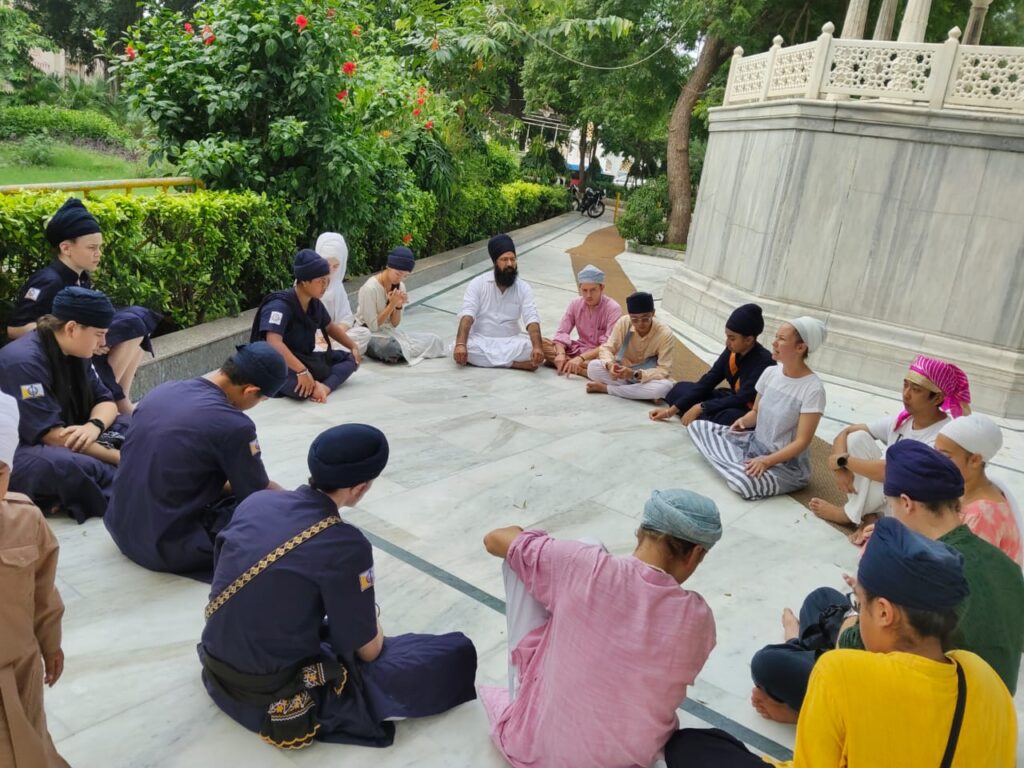
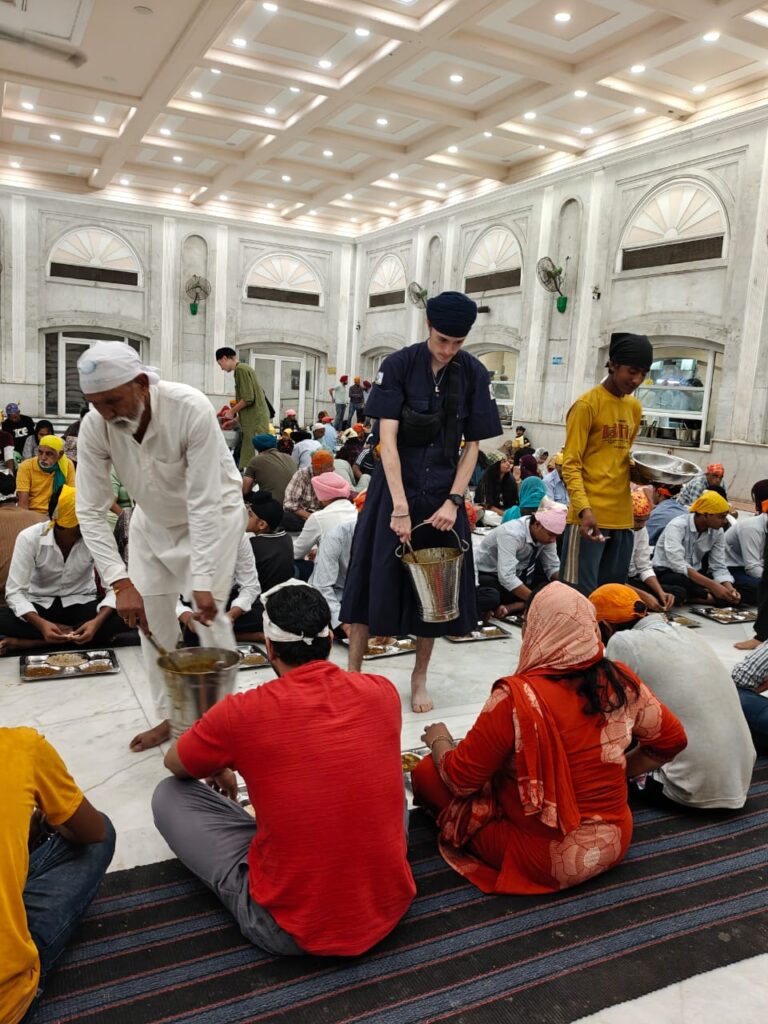
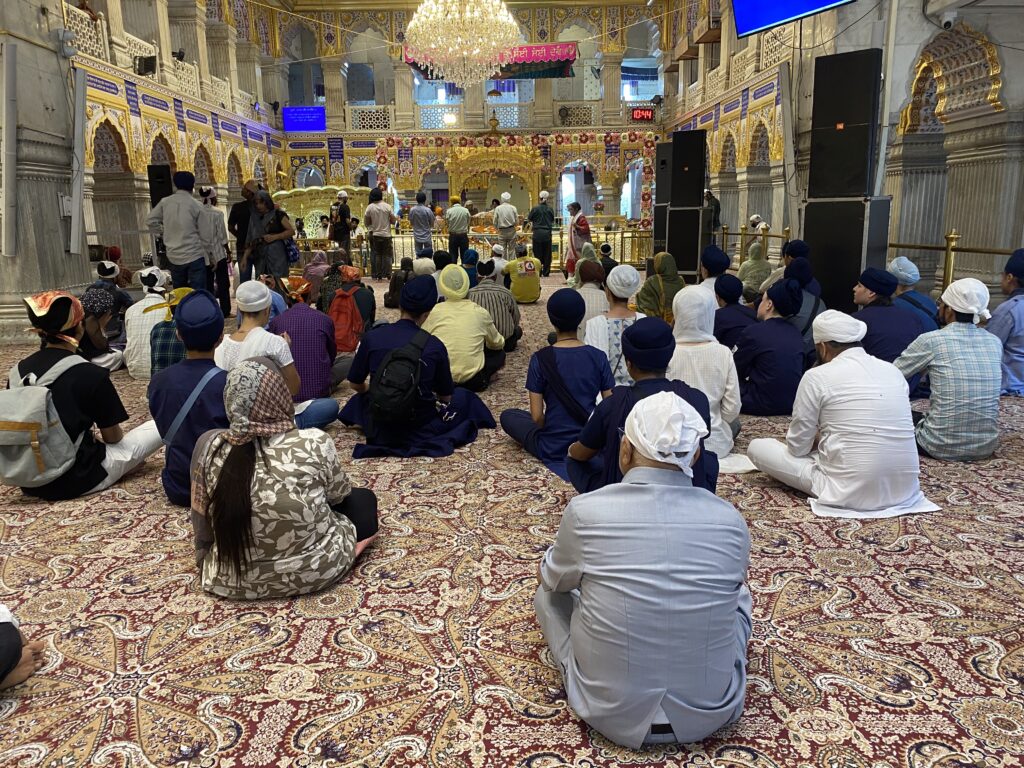
Akshardham Temple and Evening Reflections
The trip also included a visit to the Akshardham Temple, a marvel of architecture and devotion. We were mesmerized by the intricate carvings and the vibrant Sahaj Anand Water Show in the evening. This 24-minute multimedia presentation tells the story of a celestial flower in the heavens, where the gods’ arrogance leads them to believe they own the flower and understand its essence. A child challenges them, prompting the gods to seek the wisdom of the supreme being, who reveals that true essence and happiness come from within. The combination of water jets, lights, projections, and live storytelling made it a magical experience, highlighting the spiritual principle of Sahaj Anand—innate bliss.
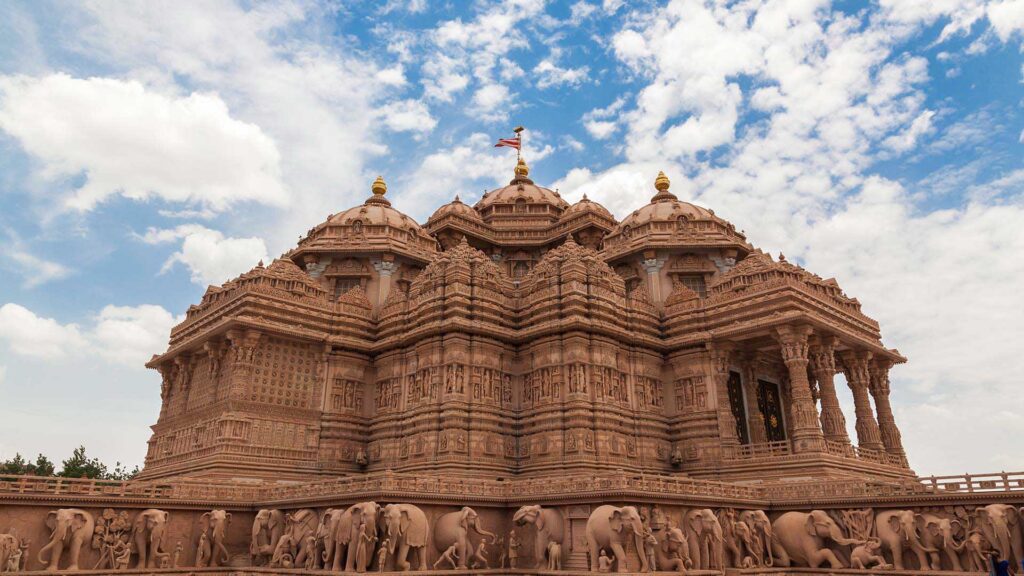

Gratitude and Reflection
Traveling to Delhi, exploring sites of profound historical and spiritual significance, we felt immense gratitude. Living in the land of the Gurus, surrounded by spirituality and history, is a gift that enriches our understanding and practice. We are thankful for a safe journey, enriching experiences, and the chance to connect deeply with our heritage.
This trip reminded us that history, sacrifice, and spirituality are not just subjects to study—they are lived experiences that continue to guide us in our everyday lives.
